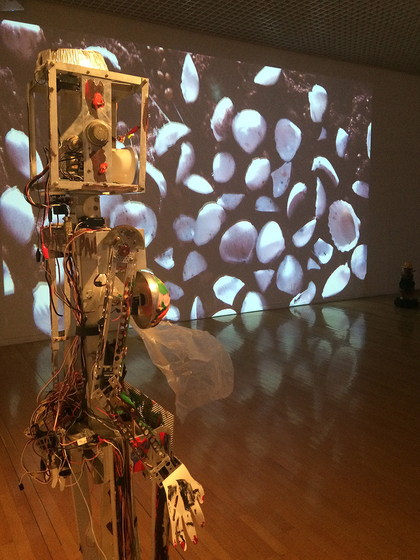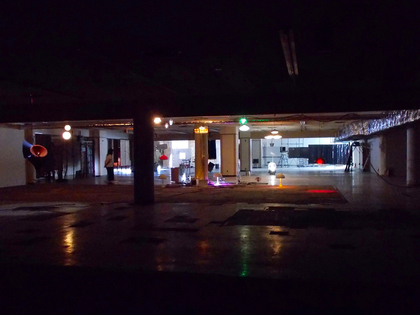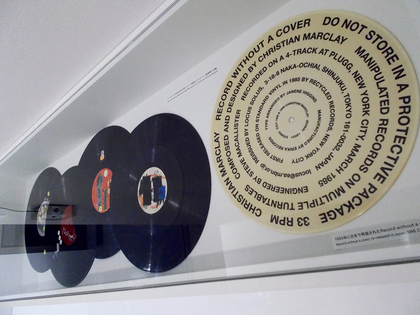
R
E
V N
E
X
T
(With) Without Records (2017) is the continuation of a collaborative artwork YOSHIHIDE OTOMO has led since 2005, with this iteration created with the input of AOYAMA YASUTOMO and TAKAYUKI ITO. The foyer of the Glass Pyramid in Moerenuma Park was filled with “prepared” records and record players, supported on stands above visitors’ heads, down low, as well as on the floor. Walking through the record players, activated at different intervals and at different volumes, was similar to walking through the forest of Moerenuma Park just outside. All photos by Emily Wakeling for ArtAsiaPacific.
Under the directorship of musician Yoshihide Otomo, this year’s Sapporo International Art Festival (SIAF) 2017 is an art event with a heavy emphasis on the role of sound in contemporary Japanese art. Active across pop, jazz and experimental music genres, Otomo is also a high-profile composer for film and TV music scores. Since 2011, he has been focusing on unique public participatory projects, such as his concert series “Project Fukushima!” In 30 years of creative practice, he has been heavily interested in communal collaboration.
Though it was spread out over roughly 30 different sites in Sapporo, SIAF 2017 had two main sites. At Moerenuma Park, Otomo paid homage to its architect and designer, Isamu Noguchi. In his catalog essay, Otomo tells the story of Noguchi visiting the site in 1947, when it was a landfill. Noguchi made it his mission to revive the site with art. This, Otomo writes, was his inspiration for the festival’s direction. Like Noguchi, he resolved to revive the park by further expanding the definitions of art and sound. Twenty-four kilometers southward, at Sapporo Art Park, the theme of regeneration continued with a presentation of mid- and late-career artists whose work can, as described in the exhibition outline, “bring back the past.” In all, one question relayed the theme of this event: How do we define “art festival”? The answer is certainly something onto which the SIAF 2017 aimed to hang its own brand, with its heavy inclusion of sound, music and collaboration.
The Sapporo International Art Festival 2017 runs until October 1, 2017.
To read more of ArtAsiaPacific’s articles, visit our Digital Library.






